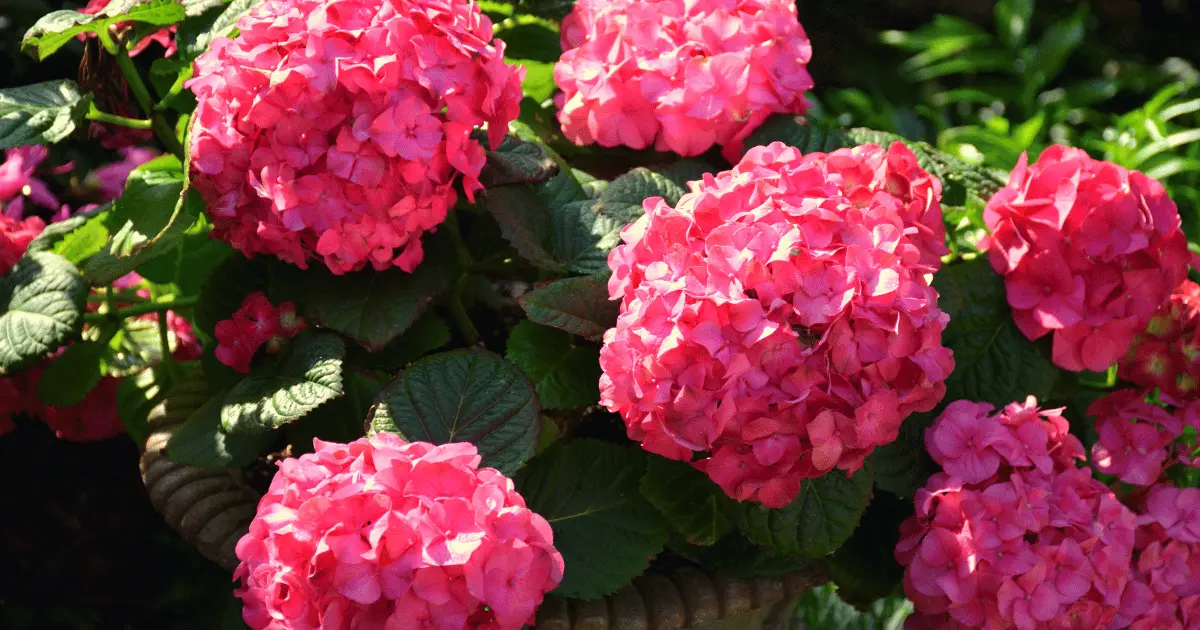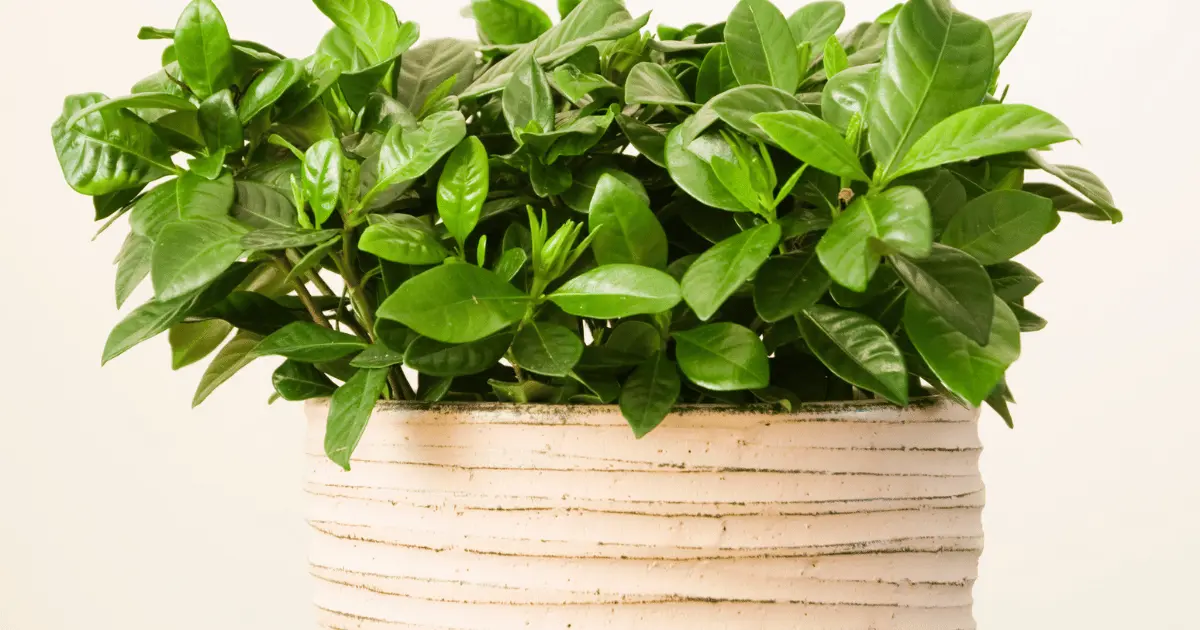Gardenias are highly symbolic plants that have so many meanings associated with them. Some see them as the embodiment of purity, love, and refinement, and many use them for wedding bouquets and decorations for special occasions.
Symbolization is not the only thing gardenias are good for; they have a strong floral smell that makes them useful for producing things such as candles and lotion. Many even believe that their fragrance helps reduce depression and anxiety. Hence, it is understandable why many choose to plant gardenias as close to them as possible.
These and more are reasons why some people grow gardenias. However, only some have enough space to grow them, which is why this article explains the step-by-step process of growing gardenias in a pot.
How To Grow Gardenias In A Pot

It can be quite rewarding to grow gardenias in a pot, but they are highly sensitive and need to be properly nurtured; if you are to have a productive yield of this elegant plant, you need to take the right steps.
Step One: Pick the Right Time and Variety to Plant
The best time to plant gardenias is in the early spring, which gives them enough time to get established in their new container before harsher weather steps in. If you do everything correctly, your gardenia plant can grow from 2 to 12 feet tall and wide, depending on the variety.
Not all gardenias perform the same way when grown in a pot. You must pick a good variety, such as August beauty, Radians, Kleim’s Hardy, or First Love. Once you have picked the variety, you’ll find that growing gardenias in a pot can be quite fulfilling.
Step Two: Pick the Right Pot
Get a pot at least 4 inches larger than the pot you purchased your Gardenia in. Bigger pots will help your plant grow better and give it the room it needs to flourish. If you can, retain as much of the original soil as possible. Make sure your pot has good drainage holes. Avoid standing your pot in a saucer, as this can retain water and keep your roots constantly wet.
Step Three: Use the Right Soil
Gardenias do well in well-draining soil instead of those that allow puddles to form. Peat moss, coarse sand, and potting compost are advisable for acid-loving plants. Slightly acidic soil with a soil pH scale of about 5.0 and 6.0 is best for your gardenias.
Do not plant your Gardenia near concrete walls where the pH might be too high and affect its growth. Add a layer of mulch to your pot after planting to help retain moisture during the warm summer.
Step Four: Get your Location Right
Gardenias do not require excessive sunlight, so you might find it necessary to shade your plant in warmer zones or during hot weather—one way to do this is by moving the pot indoors to provide shade.
If your room temperature is about 60 degrees Fahrenheit, your Gardenia should be placed on a bright window wedge but be careful not to expose it to excess or direct sunlight.
Gardenias are highly sensitive that often need to acclimatize to the weather. Help your plant to do this by moving them outdoors during the day and back indoors at night for at least one to two weeks. Afterward, you can comfortably leave it outdoors to help further acclimate properly.
Step Five: Allow Access to Humidity
Gardenias need humidity for survival, so you should lay stones or pebbles under your plant to provide humidity. Spray your pebbles with water every morning; as the water slowly evaporates all day long, it will provide humidity for your plant.
Alternatively, you can put some stones in a tray and add water, then place the pot on top of the stones. Be careful to keep the water from reaching the top of the stones or the bottom of the pot. The evaporating water will provide humidity for your plant, and you can top up the water as it dries out.
Step Six: Water the Plant Properly
Water the gardenia plant once or twice a week only when the soil is dry below the surface; use rainwater preferably. The water should always drain out properly, and the soil should never be soddening.
The secret is not to overwater your gardenias. A way to know when to water your plant is to stick your finger a few inches into the soil and see if it is dry.
Step Seven: Feed Regularly
Gardenias require a lot of nutrients to produce those beautiful flowers, so give your gardenias general-purpose fertilizer to feed on at least once every month during the growing period.
You can get acid-loving fertilizer for your plant from your local market. You can also use bone meals, fish emulsion, and blood meals if you want to toll the organic route.
How to Care for Your Gardenia in a pot

Here are some ways you can properly care for gardenia plants:
Monitor the Watering of the Plant
Be vigilant and always inspect the plant to determine how much water it needs.
- If you notice yellowing leaves or dropping leaves, it might signify that your plant is overwatered—so water only when necessary.
- If the leaves turn brown at the tip, they are not adequately watered.
- Also, always check your pot to ensure it is not sitting on the water, as this damages your plant.
- Keep your plants hydrated but not saturated, as this could damage your plant.
- Use tepid and not cold water on your plant.
Check for Nutrient Deficiency
Yellow or light green leaves with darker veins mean chlorosis in your plant. You can treat this with an iron chlorosis spray and feed your plant with a diluted liquid high in nitrogen.
Monitor its Exposure to Sunlight
Your plant could wilt if it is getting too much midday sun. You can mist your plant until it recovers. Another solution is placing your pot in a shadier spot during the midday heat.
Occasionally Prune the Plant
Gardenias do not require much cutting or pruning, but you can do this occasionally for a good shape and size. Remove faded flowers to encourage more growth.
Other General Nurturing Tips
Gardenias do not tolerate cold or freezing temperatures, so move your plant inside or close to your house after the first hard frost. Buy your plant from a reputable vendor and check out the ones with dark green leaves and zero yellowing foliage.
Gardenias are beautiful plants with many benefits and positive connotations, so it is no wonder you want to plant them close by in a pot. However, due to their sensitive nature, it can be technical to grow them properly. The steps outlined in this article will help you do a good job of growing gardenias successfully in a pot.
